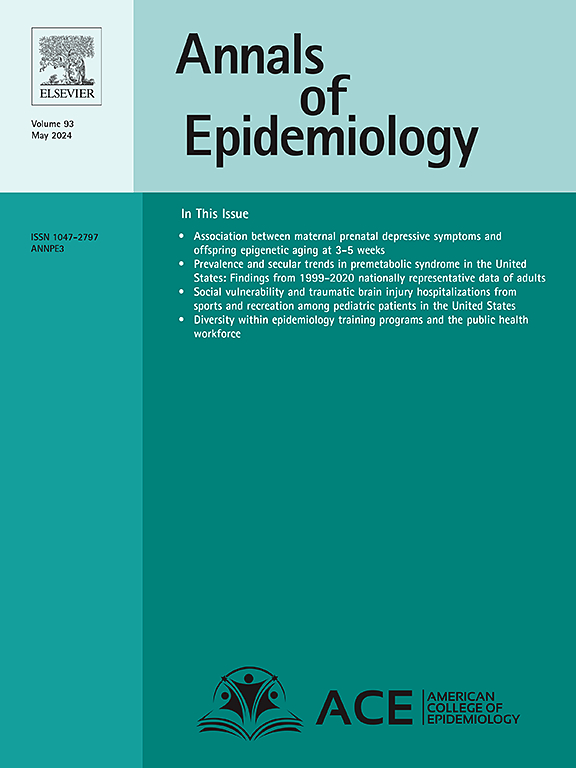Associations between in-home environmental exposures and lung function in a safety net population of children with asthma using electronic health records and geospatial data
IF 3.3
3区 医学
Q1 PUBLIC, ENVIRONMENTAL & OCCUPATIONAL HEALTH
引用次数: 0
Abstract
Purpose
The effects of in-home environmental exposures (IHEEs) on asthma are challenging to examine in populations because information on asthma triggers is usually absent. We leveraged data from electronic health records (EHRs) to investigate the associations of residential cockroach and rodent exposures with lung function among children with asthma.
Methods
We merged clinical pulmonary function test data from EHRs for children with asthma from a large safety net hospital in the Northeast United States with publicly available geospatial data matched to patient addresses. Predicted presence of key IHEE asthma triggers, cockroaches and rodents, were included as main exposures and housing parcel features and census tract characteristics were included as potential confounders in a sensitivity analysis. We fit latent Bayesian hierarchical models of percent predicted forced expiratory volume in one second (FEV1%).
Results
The study population of 1070 children had a mean age of 10.2 years and 75 % identified as Black, many living in historically segregated neighborhoods. In models adjusted for individual characteristics, we observed 2.26 (95 % credible interval, 95 %CrI: − 3.72, − 0.79) and 2.58 (95 %CrI: − 4.54, − 0.66) percentage points (pp) lower FEV1% from a one-unit increase in the log-odds of the probability of cockroach and rodent presence, respectively. The association with lung function increased in magnitude for cockroach exposure but attenuated for rodent exposure in sensitivity analyses.
Conclusions
IHEEs were associated with worse lung function among children with asthma in a safety net population. The observed associations underscore how injustices in housing and neighborhood characteristics contribute to asthma morbidity.
使用电子健康记录和地理空间数据的哮喘儿童安全网人群中家庭环境暴露与肺功能之间的关系
目的:家庭环境暴露(IHEEs)对人群哮喘的影响具有挑战性,因为通常缺乏哮喘触发因素的信息。我们利用电子健康记录(EHRs)的数据来调查哮喘儿童中居住蟑螂和啮齿动物暴露与肺功能的关系。方法:我们将来自美国东北部一家大型安全网医院的哮喘儿童电子病历的临床肺功能测试数据与与患者地址匹配的公开地理空间数据合并。在敏感性分析中,主要暴露因素包括蟑螂和啮齿动物,潜在混杂因素包括住房地块特征和人口普查区特征。我们拟合了一秒钟内预测用力呼气量百分比(FEV1%)的潜在贝叶斯层次模型。研究结果:1070名儿童的平均年龄为10.2岁,其中75%为黑人,许多人生活在历史上实行种族隔离的社区。在针对个体特征调整的模型中,我们观察到,蟑螂和啮齿动物存在的概率每增加一个单位,fev1个百分点分别降低2.26(95%可信区间,95% cri: -3.72, -0.79)和2.58 (95% cri: -4.54, -0.66)个百分点。在敏感性分析中,蟑螂暴露与肺功能的相关性增加,而啮齿动物暴露与肺功能的相关性减弱。结论:在安全网人群中,IHEEs与哮喘儿童肺功能恶化有关。观察到的关联强调了住房和社区特征的不公正如何导致哮喘发病率。
本文章由计算机程序翻译,如有差异,请以英文原文为准。
求助全文
约1分钟内获得全文
求助全文
来源期刊

Annals of Epidemiology
医学-公共卫生、环境卫生与职业卫生
CiteScore
7.40
自引率
1.80%
发文量
207
审稿时长
59 days
期刊介绍:
The journal emphasizes the application of epidemiologic methods to issues that affect the distribution and determinants of human illness in diverse contexts. Its primary focus is on chronic and acute conditions of diverse etiologies and of major importance to clinical medicine, public health, and health care delivery.
 求助内容:
求助内容: 应助结果提醒方式:
应助结果提醒方式:


